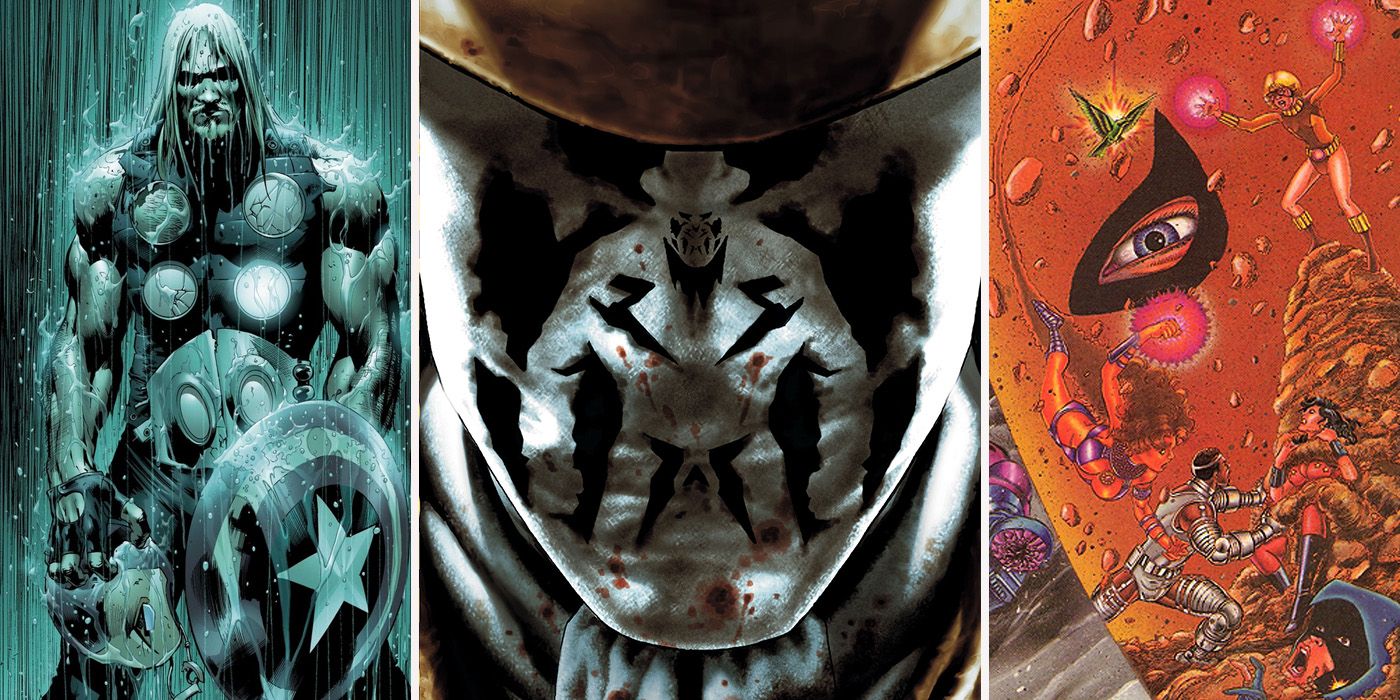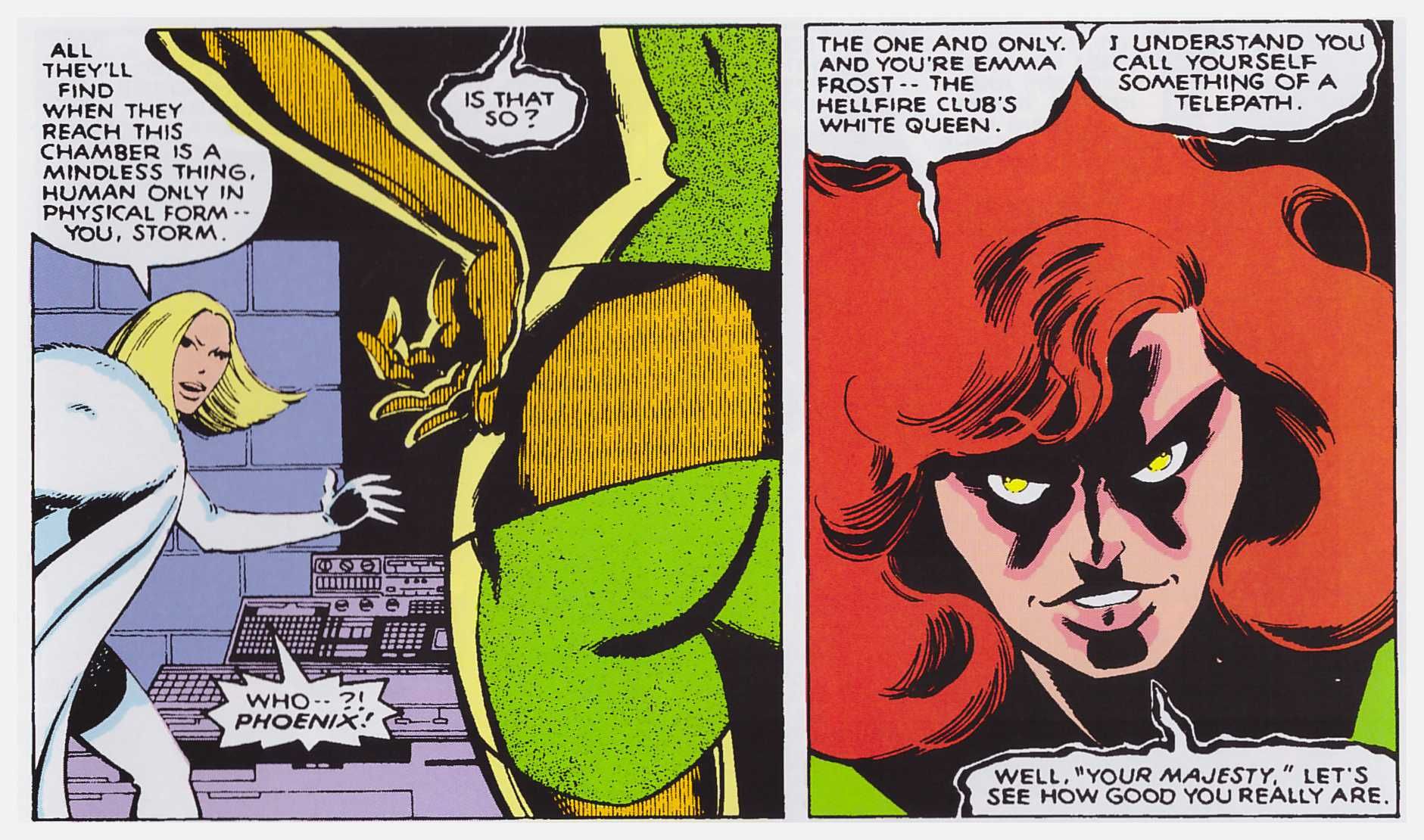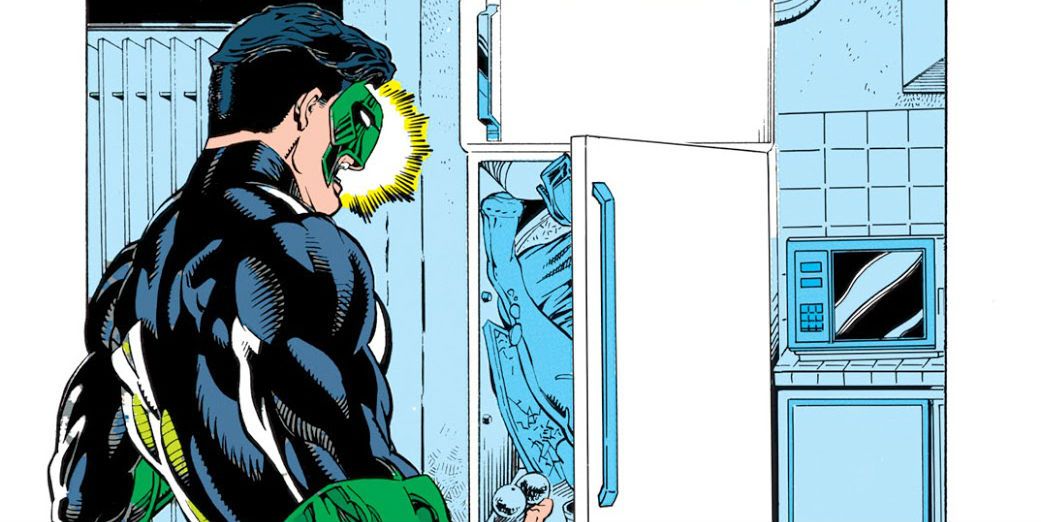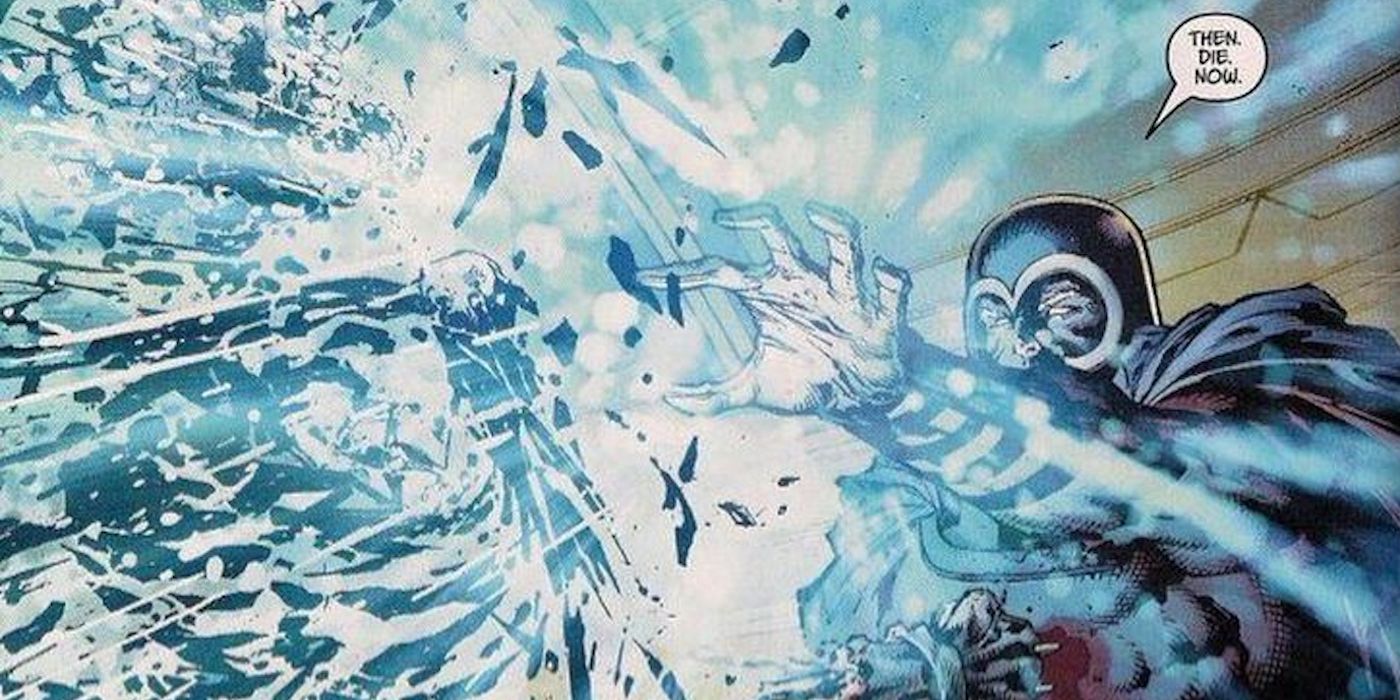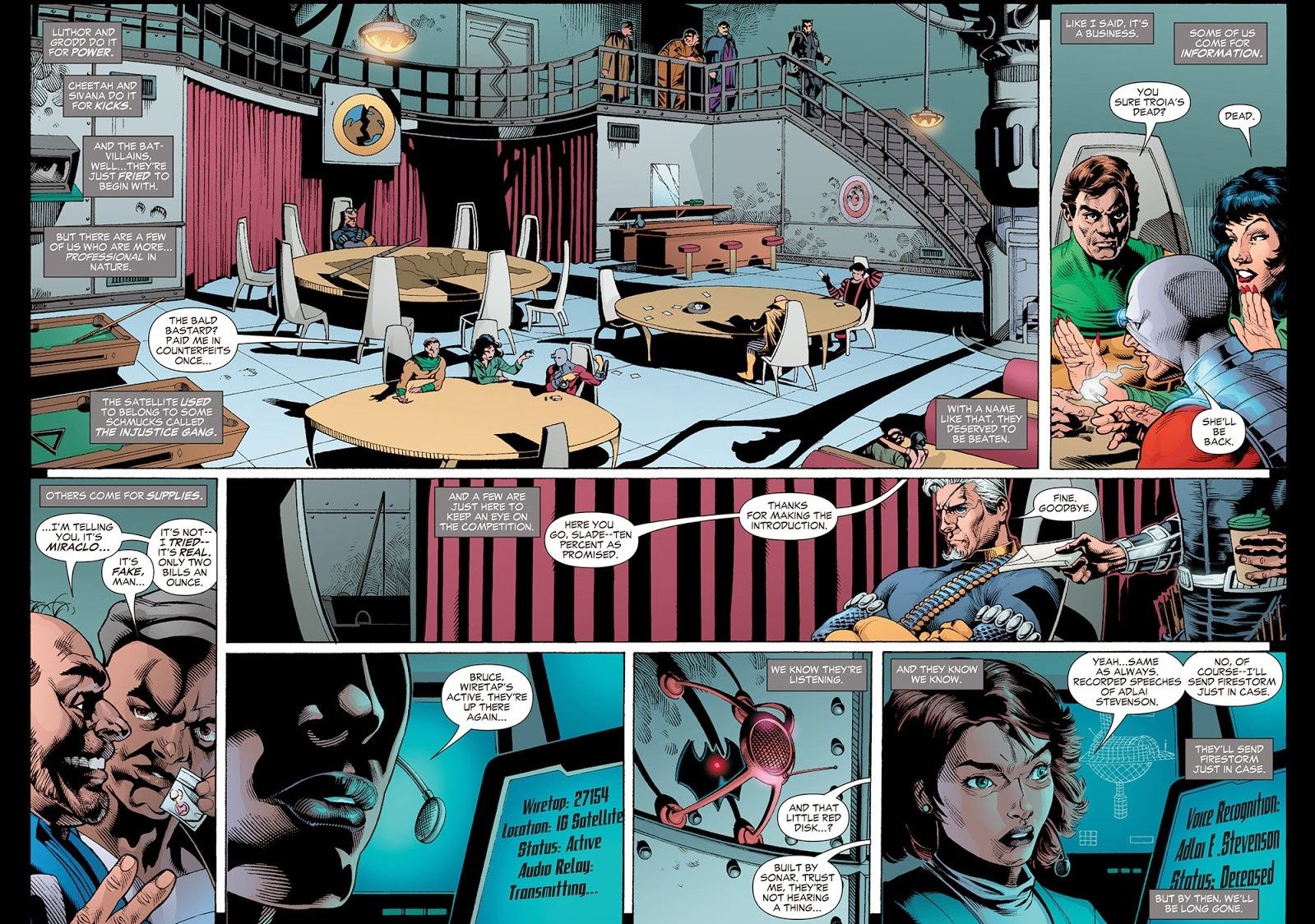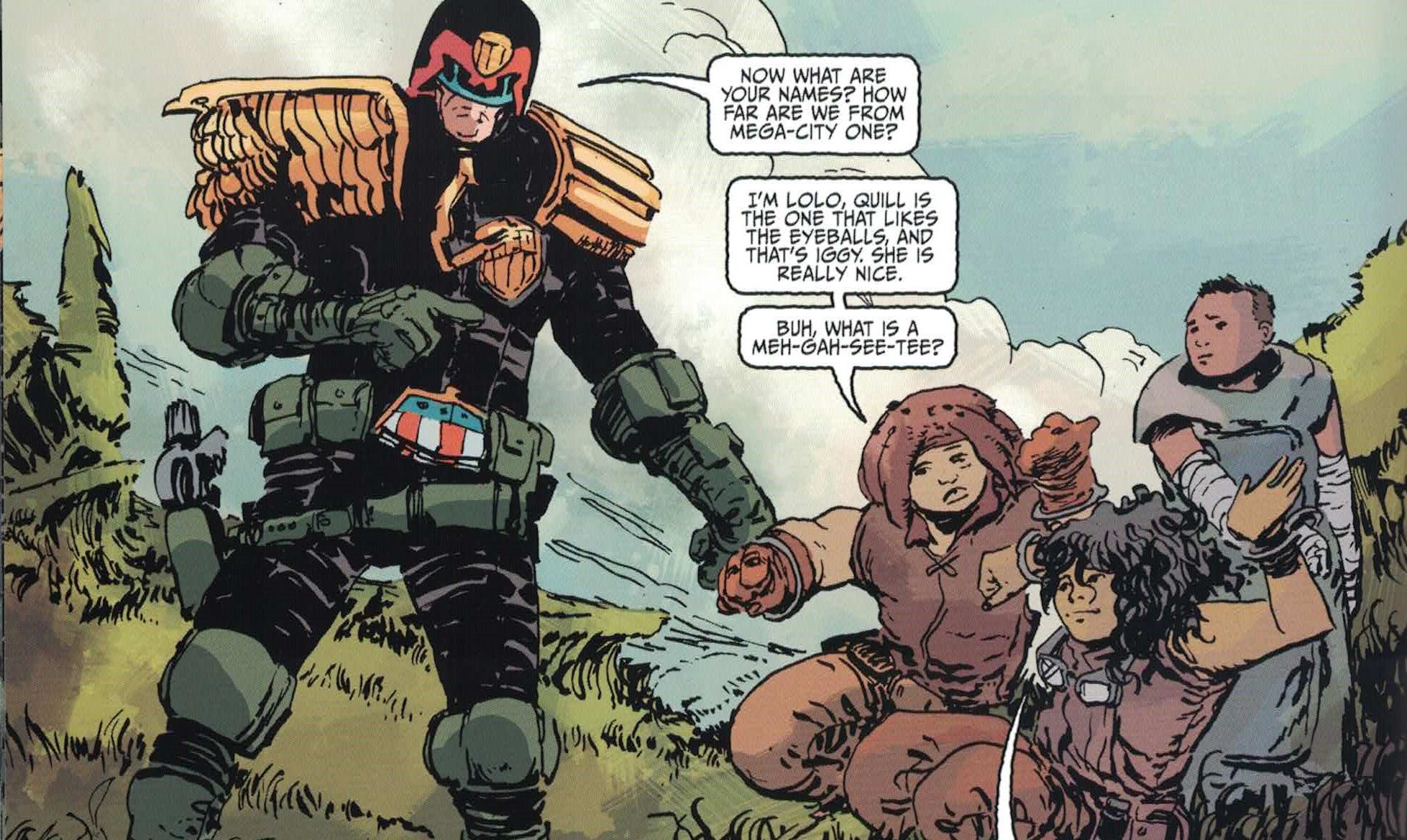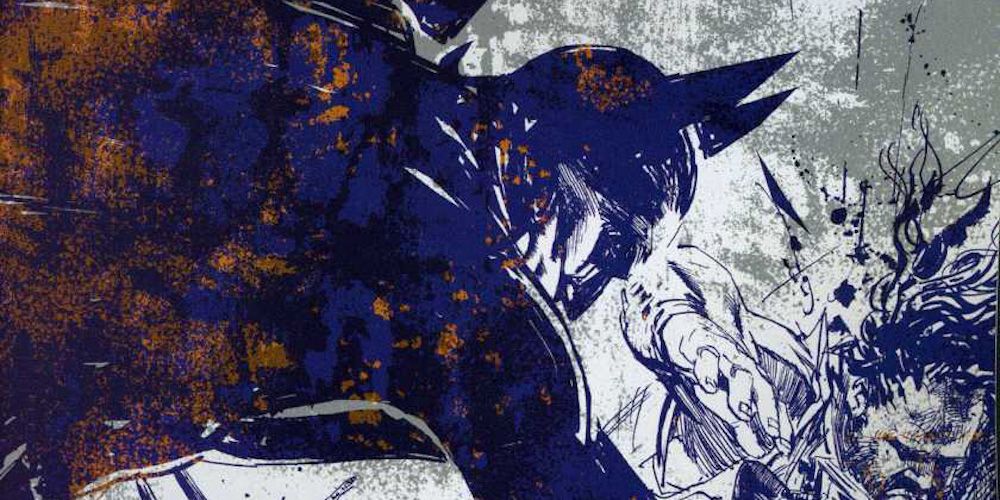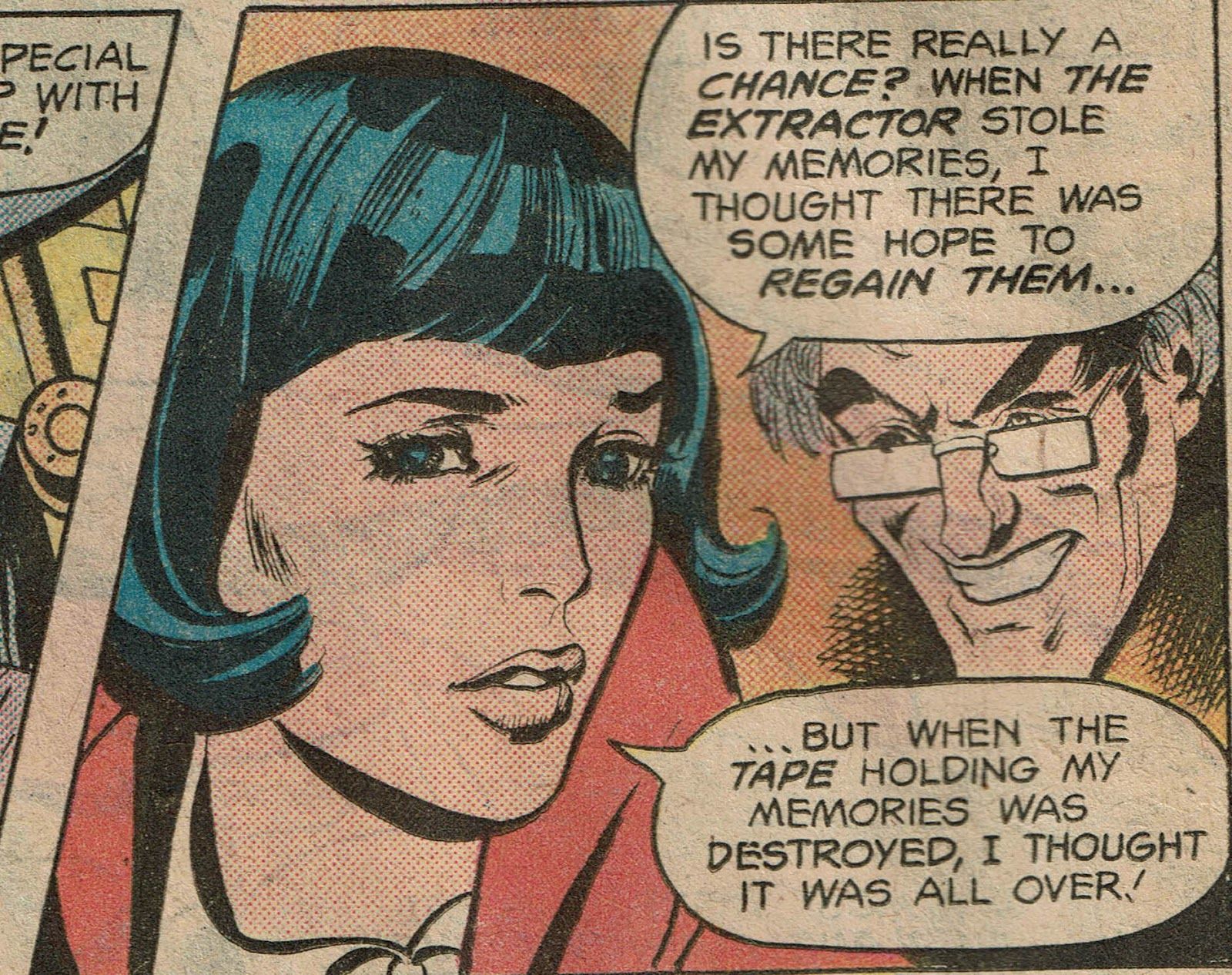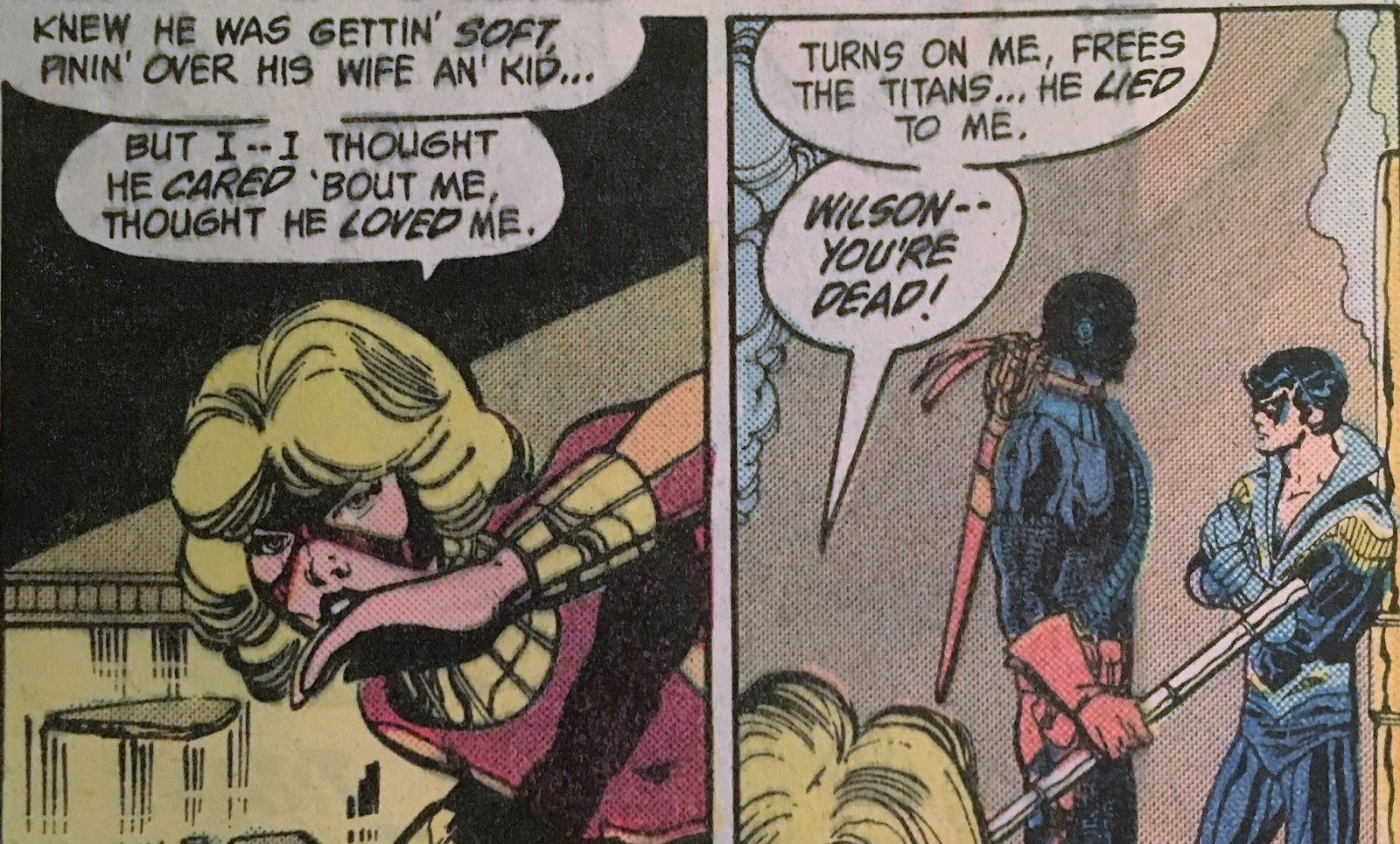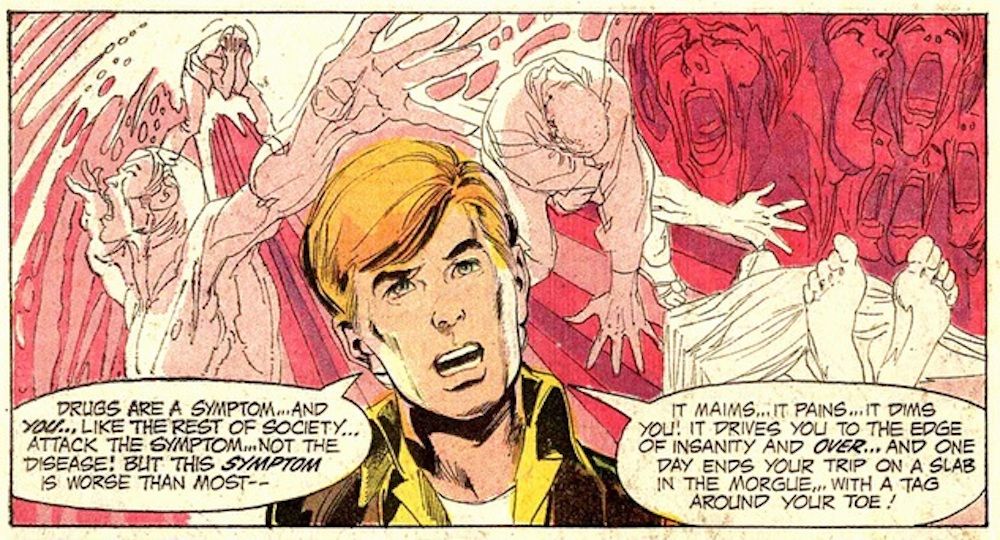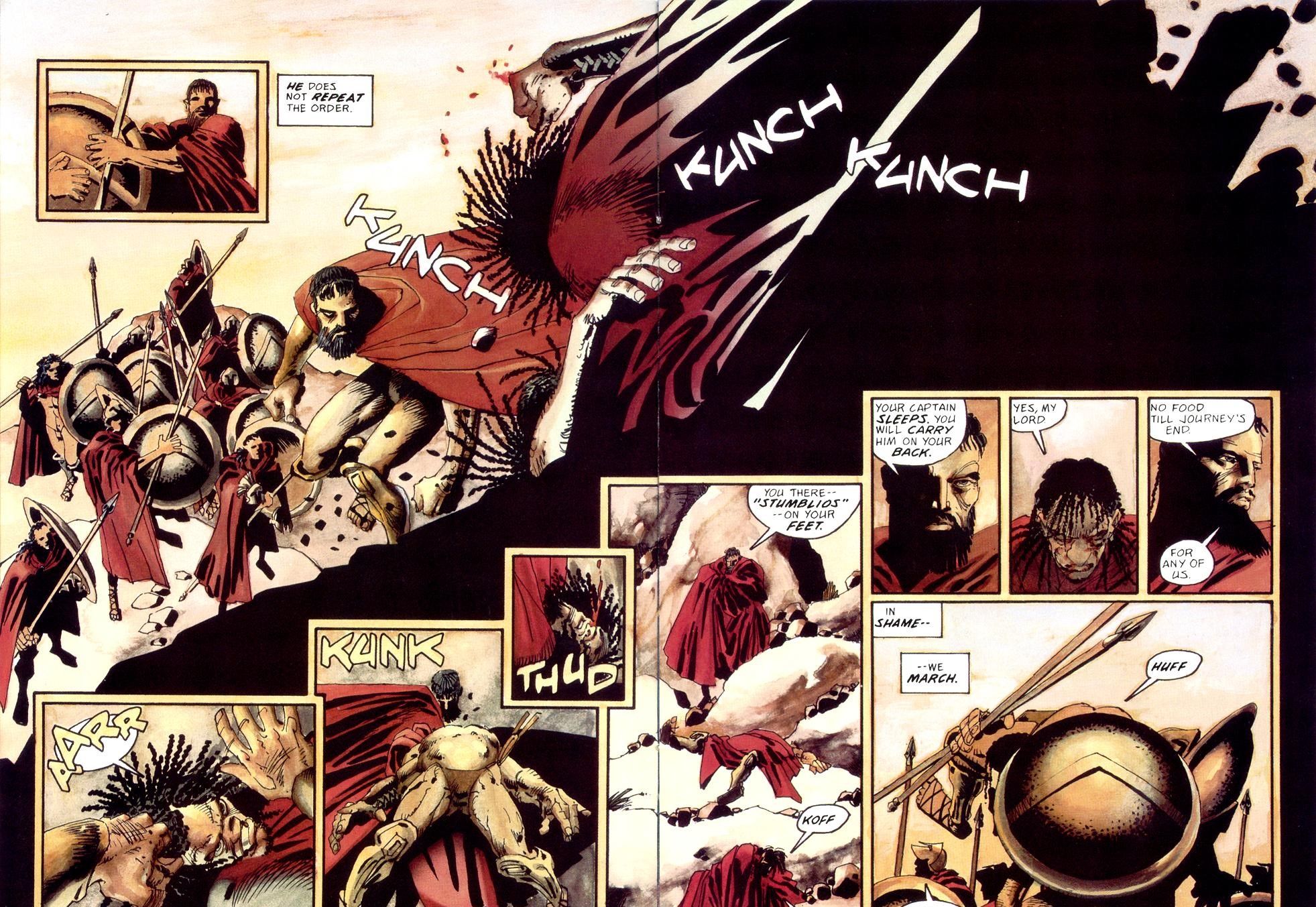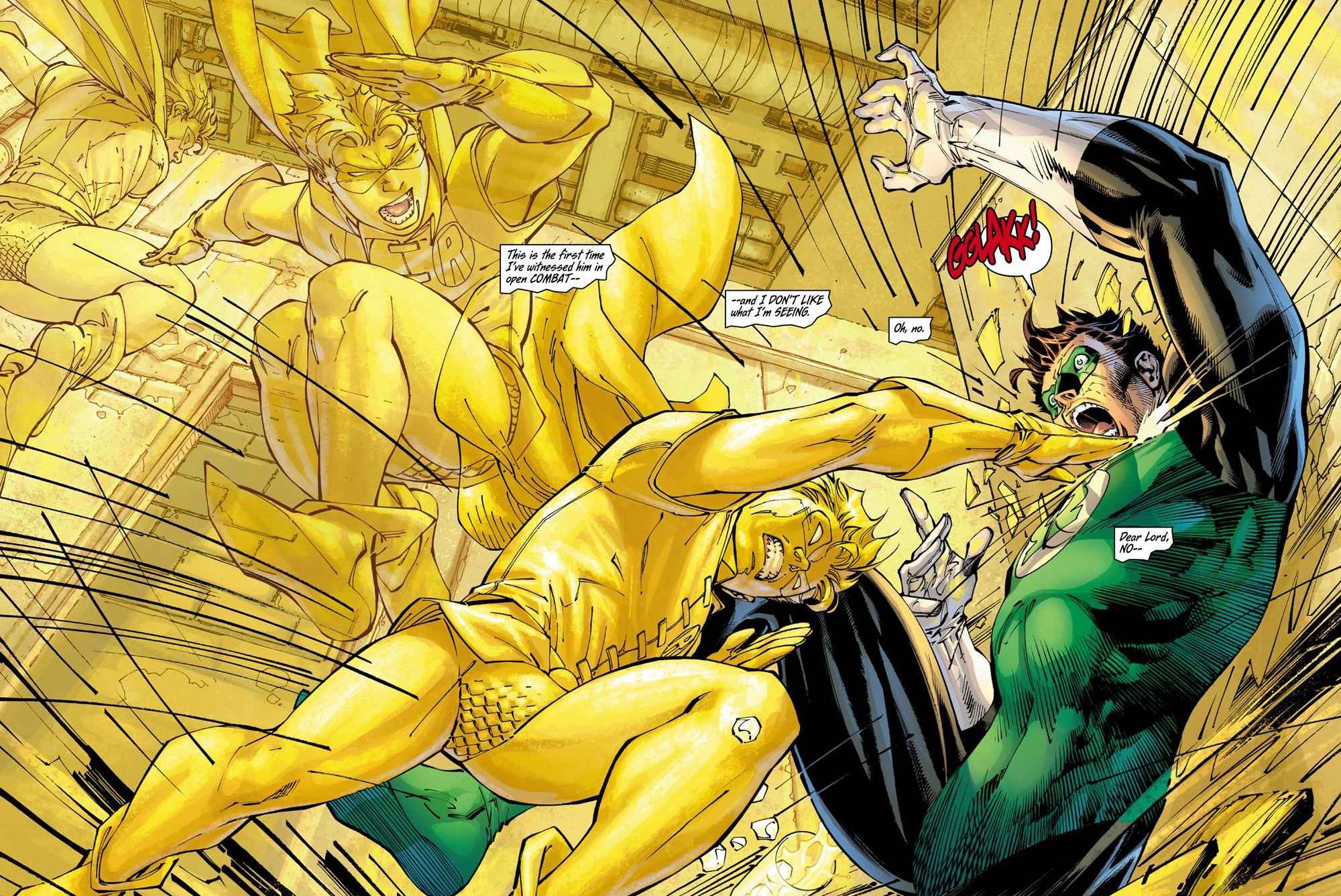Ever since the publication of The Seduction of the Innocent by psychiatrist Fredric Wertham in 1954, comic books have garnered an undeserved reputation as a corrupting influence on children. Setting aside the fact that Wertham’s thesis was supported by exaggerations, intentional misinterpretations, and outright lies, as well as the fact that the target demographic of comic books has shifted from children to young adults in the last 60 years, parents have since taken a hard look at comics and begun making determinations about which ones were appropriate for their kids and which ones would have negative impacts on their young progeny.
Despite this vigilance, there have been some works that have managed to work their way through several levels of censorship, around restrictive parents, and into the hands of impressionable young people. Sometimes these are subtle subversions hidden in popular works, sometimes they’re very oblique and any parent who allowed their child to read them probably had it coming. It’s important for parents of child comic readers to keep a finger on the pulse of the comic book community, if for no other reason than to know what is and isn’t appropriate for kids. With that in mind, here are 15 corrupting comics that parents probably didn’t notice.
15 THE DARK PHOENIX SAGA
The lauded "Dark Phoenix Saga" emerged at the height of the X-Men’s cultural presence. Detailing the story of Jean Grey’s transformation from bland good-girl archetype to sexualized bad-girl archetype, the comic got as close as it could come to being explicit without actually crossing that line. All of a sudden, the typically demure Grey was drawn in skin-tight clothing with hyper-accentuated curves while walking around in black S&M gear and dominating her friends as if they were her slaves.
Apart from the themes of power through sexuality which was clearly aimed at teen boys experiencing funny feelings for the first time, the comic was also responsible for Jean Grey’s first resurrection, potentially imparting the lesson that death is not only reversible, but easily so. Because that’s a lesson for kids.
14 GREEN LANTERN #54
The introduction of Kyle Rayner as the new Green Lantern of Earth was going fairly well, but writers felt he needed some kind of boost, a jolt of motivation to give him a more tragic and exciting story. Their solution? Graphically murder his on-again, off-again girlfriend Alexandra DeWitt and have Kyle find her butchered body stuffed in his refrigerator. Killed at the hands of Major Force, who dismissed her death and significance by making a sandwich immediately afterwards, DeWitt sparked a backlash against the use of women in comics as disposable story tools as opposed to characters.
The term ‘women in refrigerators’ was born from this scandal and the resulting changes have certainly improved things, but any kids who thought they were reading just another issue of Green Lantern were informed of how expendable women could be if it means their significant others can have the drive to avenge them.
13 ULTIMATUM
There’s no shortage of bizarre, uncomfortable, or offensive creative decisions that went into the creation of Marvel’s Ultimate Universe, and all of them can be found in the "Ultimatum" storyline. The actual plot of the story is a convoluted mess indicative of the nature of comic books, but generally revolved around an out-and-out war between the X-Men and Magneto that spilled out into the larger Ultimate Universe.
Among the more notable moments in the series was Blob cannibalizing Wasp, most of the X-Men getting eviscerated, and the whole thing wrapping up with Quicksilver sniping Cyclops with a headshot. Though more obscene than corrupting, it did supply readers with a surplus of gory imagery and unnecessarily grisly story beats. Parents who bought these issues for their kids or let their kids buy it for themselves probably should have taken a deeper interest into what their progeny was reading.
12 IDENTITY CRISIS
DC Comics likes to emphasize the seriousness of certain story lines by calling them ‘crisis,’ as if identifying the world-ending events of a fictional universe makes it more intimidating. But the ill-advised Identity Crisis series didn’t deserve such a title. The plot involved the revelation that a secret cabal of prominent heroes had mind-wiped several of their peers and enemies to cover up the trauma and fallout of the retconned assault of Sue Dibny by Dr. Light.
On top of the extremely violent and kid-unfriendly themes of the story, the idea that the best way to deal with said violent and kid-unfriendly themes is to mentally bury and forget them isn’t just a corrupting concept, it’s a downright dangerous one to be teaching to children. It wouldn’t take much for them to internalize that message and immediately begin developing anti-social tendencies.
11 HOLY TERROR
Any comic book fan worth their salt knows that writer Frank Miller isn’t just one of the most brilliantly subversive authors in the history of the medium, he’s also an absolute lunatic known for making some of the most outrageously inappropriate graphic novels of all time. Case in point: Holy Terror. Originally meant to be a propaganda piece which involved Batman defending Gotham from Islamic terrorists, it evolved into a violent, graphic story where a new character, the Fixer, brutalizes Al Qaeda agents.
Though the patriotic tones of the film were well intentioned, the book drew vast quantities of criticism due to a pointedly anti-Muslim stance and a blatant misunderstanding of core Islamic concepts. Unfortunately, Miller’s name still carries enough weight that young comic book readers might have picked this up under the impression that it would be a work of some quality.
10 2000 AD
At this point, the character of Judge Dredd has safely acclimated into the mainstream of pop culture. The helmeted dispenser of justice and the megacities he presides over have become famous through both the popularity of his comics, 2000 AD, and the two movies that share his name. Parents who inadvertently let their kids get this comic might mistakenly believe that he’s an over the top future cop enforcing law and order, and hope that children emulate his drive for justice.
In reality, creator John Wagner explicitly intended for Judge Dredd to be a satirical and scathing critique of British authoritarianism and police militarization. Unfortunately, those political undertones were largely underappreciated by young audiences who took the brutal enforcer at face value and championed him as a legitimate hero, meaning they were all the more susceptible to unintentionally pro-fascist ideologies.
9 THE WIDENING GYRE
Kevin Smith has a bizarre relationship with comics. As possibly the most famous comics fan in the world, he is granted unprecedented fan influence over the industry and has even penned multiple comic stories, some of which are really good. The Widening Gyre is not one of them. The Batman-centered story saw him confess to wetting himself on his first iconic night on the prowl, the villain Onomatopoeia disguising himself as the hero Baphomet, and Batman rekindling his romance with Silver St. Cloud in the most awkward fashion possible.
The main idea of the plot was to emphasize the enlarging gap between Batman’s civilian and hero lifestyles, ultimately losing control of both because he is unable to merge the two. Beyond this, the story promotes paranoia, redefines the role civilians should play in vigilantism, and gives very unrealistic expectations of a consummated romantic relationship. Comic books in a nutshell, really.
8 I AM CURIOUS (BLACK)!
In the history of the medium, comics books have been known to occasionally be stupid, wrongheaded, or tone deaf. And sometimes, as in the case of the "I am Curious (Black)!" storyline, it an be all three at the same time and then some. Published in the adventures of Superman’s Girlfriend Lois Lane, it was a one-shot story wherein Lois used a Kryptonian machine to become African American so she could viably conduct interviews in Metropolis’s predominantly black projects, called ‘Little Africa’ because why bother being subtle? Or sensitive?
Putting aside the literal blackface that forms the crux of the story, it also showed that Superman was against interracial relationships as he is unable to accept Lois’s marriage proposal while she’s black. These lessons of intolerance and white cooption of the disenfranchised should not be imparted on anyone, let alone kids.
7 THE JUDAS CONTRACT
"The Judas Contract" is a respectable, well-written, and important plot line under the Teen Titans title where rebellious teen hero Terra reveals herself as a double agent and betrays the team to their nemesis, Deathstroke the Terminator. It’s a beloved story, but will always be discussed with the unspoken footnote that it contained one of the single most inappropriate element of any comic book. It is strongly hinted at that the teenage Terra was in an intimate, statutory relationship with the adult Deathstroke.
This was confirmed by writer Marv Wolfman who revealed that Terra was meant to be even younger. Though kids who were already invested in the story probably couldn’t have been kept away, parents probably should have read this in advance to keep their kids from potentially developing wrong ideas about sexuality and consent.
6 SNOWBIRDS DON'T FLY
"Snowbirds Don’t Fly" is a landmark comic story wherein Green Lantern and Green Arrow directly confront the American drug crisis and, in the process, uncover that Green Arrow’s sidekick Speedy was a junkie. Despite it’s solid anti-drug message, the story was a corrupting influence on two significant accounts. First of all, the story ends with Speedy quitting smack cold turkey, which any real drug addict would tell you is virtually impossible.
Recovery takes time and effort and can be excruciatingly painful, giving kids the idea that it’s easy might even encourage them to try drugs thinking they can stop any time they want to. Second, Speedy was immediately ostracized for his addiction and was abandoned by his mentor in subsequent issues. It’s a facet that’s defined his character into the modern Rebirth era, teaching kids that even if they beat their demons, addicts will always be defined by their dependencies.
5 300
Frank Miller has issues. Clearly, he has a radically conservative view of masculinity which limits itself to gruff and grizzly militaristic personalities with the supposed moral authority that makes them right all the time. Enter 300 where Miller doesn’t just explore his extremely toxic masculinity with a beloved IP, he does it with a literal army of murderous gym bros.
The exaggerated tale of a small force of elite Spartan fighters holding off a vast horde of invading Persians long enough for the rest of Greece to assemble a larger defense was rife with roughly drawn men wearing as little as possible while being ridiculously aggressive. Add to that the fact that the Persians and their culture were dehumanized to the point of being closer to monsters than an army of humans and you have a recipe for imprinting negative ideas of the male identity in kids who read this.
4 WATCHMEN
Ask anyone who has read Alan Moore’s Watchmen what their favorite character is and a large number of them will name the rogue vigilante Rorschach. His lone wolf identity, unwavering devotion to justice, and brutal tactics are certainly appealing elements which would make him a good character, but only if one is willing to overlook his many, many flaws.
He’s a bigoted, homophobic, immature, and anti-social sociopath who had significant ideas of toxic masculinity even before he went insane. And he’s supposed to be a protagonist. One with a cool mask, tragic backstory, and who’s ostracized by his peers, basically an off brand and less moralistic Batman. Of course he was going to be popular, but this unfortunately means that kids would be exposed to his hateful and prejudiced ideologies in a positive light.
3 THE KILLING JOKE
The comic book one-shot that rediscovered the Joker, pushed Batman to his moral limits, and went on to define Batgirl as a character for the better part of thirty years, Alan Moore’s The Killing Joke, despite its many accolades, features a problem so glaring and divisive that even Moore has formally disowned the comic. In the story, which has Joker attempting to prove that nobody is more than “one bad day” away from being as insane as him, centered around the Clown Prince of Crime shooting, crippling, and assaulting Barbara Gordon to corrupt her father.
With a single gunshot, Moore took Batgirl, a character with agency and independence, and took away any defining traits so she could be used as a victimized prop in his story. The ‘women as objects’ subtext this implies is severely problematic and Moore’s disavowal of the story is more than justified, it’s necessary.
2 THE ULTIMATES
In all fairness, Marvel’s entire failed Ultimate Universe could easily find a place on this list. The entire point of the divergent world seemed to be to remake every hero in the Marvel cannon as unlikable as possible. But the ill-fated Ultimates line was possibly the most corrupting of all, if for no other reason than the off-brand Avengers featured an incestuous relationship between Quicksilver and Scarlet Witch. A relationship that not only were the other Ultimates aware of, but were seemingly pretty okay with.
There’s even a bizarre few panels where Wasp has to spell out the nature of their pairing to Captain America, explaining that the love they shared was acceptable because of the trauma the two had experienced together. Because teaching kids that being intimate with their siblings is okay is…actually no that’s a terrible lesson that kids definitely should not be learning from their superheroes.
1 ALL-STAR BATMAN & ROBIN, THE BOY WONDER
There’s a running joke around All-Star Batman & Robin, The Boy Wonder that DC wanted to distance itself from Frank Miller as much as possible but still maintain their connection to his brand, so they gave him his own universe to mess around with outside of the main continuity. Taking place in the same world as his legendary The Dark Knight Returns and The Dark Knight Strikes Back, the series is characterized by Miller’s anti-police, pro-profiling Batman who hooks up with Black Canary amongst the burning bodies of criminals, bullies Superman, and nearly kills Green Lantern just because he’s “the goddamn Batman.”
This isn’t just misappropriating a famous character, it’s perverting a universal symbol of unquivering morality to reflect a certain artist’s pseudo-masculine ideology and presenting said symbol to unsuspecting kids. For shame.

